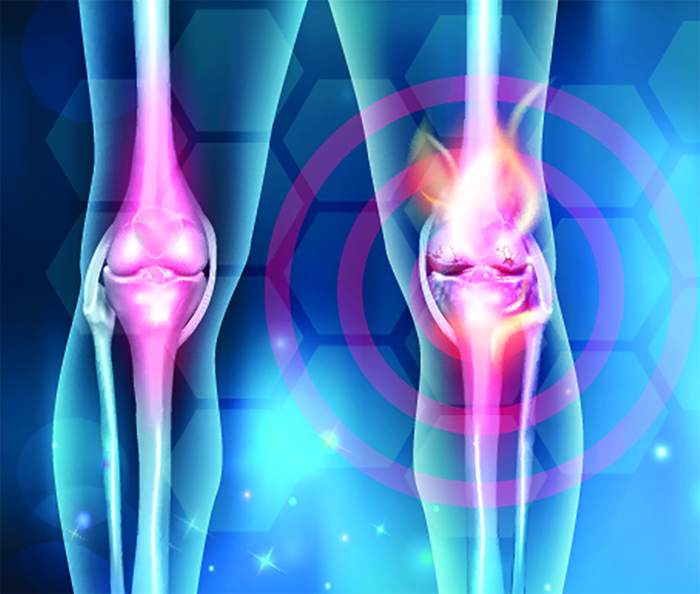In a series of recent experiments, scientists discovered that a common dietary supplement, NAC (N-acetyl cysteine) effectively prevents joint damage and loss of cartilage from osteoarthritis in mice.
Osteoarthritis, also referred to as “wear and tear” arthritis, is the most common type of joint disorder, affecting over 30 million adults in the US. Osteoarthritis steadily breaks down cartilage in the hands, knees, hips, feet, and spine, causing joint swelling and tenderness. Symptoms can come and go over time or, in some people, they can be constant.
While there are some limited treatments for managing osteoarthritis, nothing has been found to halt the progression of this debilitating condition. Risk factors for osteoarthritis include advancing age and obesity, so as the global population becomes older and heavier, the condition is likely to become increasingly prevalent.
Recently, researchers led by Frederique Cornelis — from KU Leuven in Belgium — looked into the cellular changes involved in osteoarthritis and the interactions between certain proteins. Their findings are published in the journal Science Translational Medicine.
Specifically, the team was interested in ANP32A, which is a protein involved in a number of roles within cells, including intracellular transport and cell differentiation.
The researchers noted that levels of ANP32A were significantly lower in tissue samples from both humans and mice with osteoarthritis. This piqued their interest — so, using gene expression profiling, they dug a little deeper into the protein’s function.
They used a mouse model that is incapable of producing ANP32A, which causes them to develop osteoarthritis and osteopenia, or bone loss. They also developed a condition similar to cerebellar ataxia, symptoms of which include stumbling and a lack of coordination.
The study authors summarize their initial findings: “ANP32A protects against the development and progression of osteoarthritis by preventing oxidative stress in the articular cartilage.”
Next, the researchers tested the effects of adding an antioxidant called N-acetyl-cysteine (NAC) to drinking water.
They found that adding NAC to the animals’ diet reduced symptoms of osteoarthritis, and cartilage damage seemed to be halted.
To understand what mechanism might be behind ANP32A’s ability to reverse these symptoms, the researchers dug a little deeper. They found that ANP32A raises the levels of an enzyme known as ATM, which plays an important role in regulating cellular defensive responses against oxidative stress.
They explain, “ANP32A’s protective role can be attributed to promoting the expression of ATM in the articular cartilage, to preserve the cellular redox balance.”
In other words, if ANP32A is not present, there is less ATM available to mop up the free radicals that are causing damage to the cartilage.
The authors hope that understanding the role of ANP32A and ATM in more depth could lead to interventions for a number of difficult-to-treat and poorly understood conditions.
They believe that their findings “may have therapeutic implications not only in chronic joint disorders but also in bone and neurological diseases.”
However, there is much work still to do; as the authors make clear, this molecular interaction is unlikely to be the only mechanism involved in osteoarthritis. In the future, the team hopes to investigate other factors that might influence ANP32A production in cartilage.
Source: ANP32A regulates ATM expression and prevents oxidative stress in cartilage, brain, and bone Science Translational Medicine 12 Sep 2018: Vol. 10, Issue 458, eaar8426. DOI: 10.1126/scitranslmed.aar8426













[…] Source — healthylbook.com […]
[…] Source […]